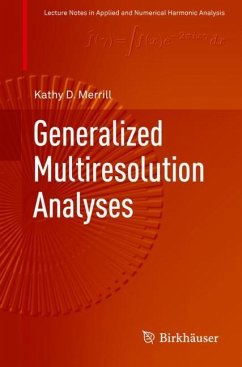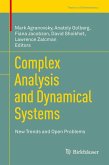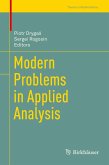This monograph presents the first unified exposition of generalized multiresolution analyses. Expanding on the author's pioneering work in the field, these lecture notes provide the tools and framework for using GMRAs to extend results from classical wavelet analysis to a more general setting.
Beginning with the basic properties of GMRAs, the book goes on to explore the multiplicity and dimension functions of GMRA, wavelet sets, and generalized filters. The author's constructions of wavelet sets feature prominently, with figures to illustrate their remarkably simple geometric form. The last three chapters exhibit extensions of wavelet theory and GMRAs to other settings. These include fractal spaces, wavelets with composite dilations, and abstract constructions of GMRAs beyond the usual setting of L2( n).
This account of recent developments in wavelet theory will appeal to researchers and graduate students with an interest in multiscale analysis from a pure or applied perspective. Familiarity with harmonic analysis and operator theory will be helpful to the reader, though the only prerequisite is graduate level experience with real and functional analysis.
Beginning with the basic properties of GMRAs, the book goes on to explore the multiplicity and dimension functions of GMRA, wavelet sets, and generalized filters. The author's constructions of wavelet sets feature prominently, with figures to illustrate their remarkably simple geometric form. The last three chapters exhibit extensions of wavelet theory and GMRAs to other settings. These include fractal spaces, wavelets with composite dilations, and abstract constructions of GMRAs beyond the usual setting of L2( n).
This account of recent developments in wavelet theory will appeal to researchers and graduate students with an interest in multiscale analysis from a pure or applied perspective. Familiarity with harmonic analysis and operator theory will be helpful to the reader, though the only prerequisite is graduate level experience with real and functional analysis.
"This book will be appreciated mainly by graduate students and researchers, who have been already introduced to classical wavelet theory, and have interest in the development of new construction methods of wavelets, and their use in more general contexts." (Sandra Saliani, Mathematical Reviews, December, 2019)
"It is well-suited for graduate students who want to become familiar with this interesting topic and to researchers who would like to get a quick overview over the area." (Peter Massopust, zbMATH 1409.42001, 2019)
"It is well-suited for graduate students who want to become familiar with this interesting topic and to researchers who would like to get a quick overview over the area." (Peter Massopust, zbMATH 1409.42001, 2019)








